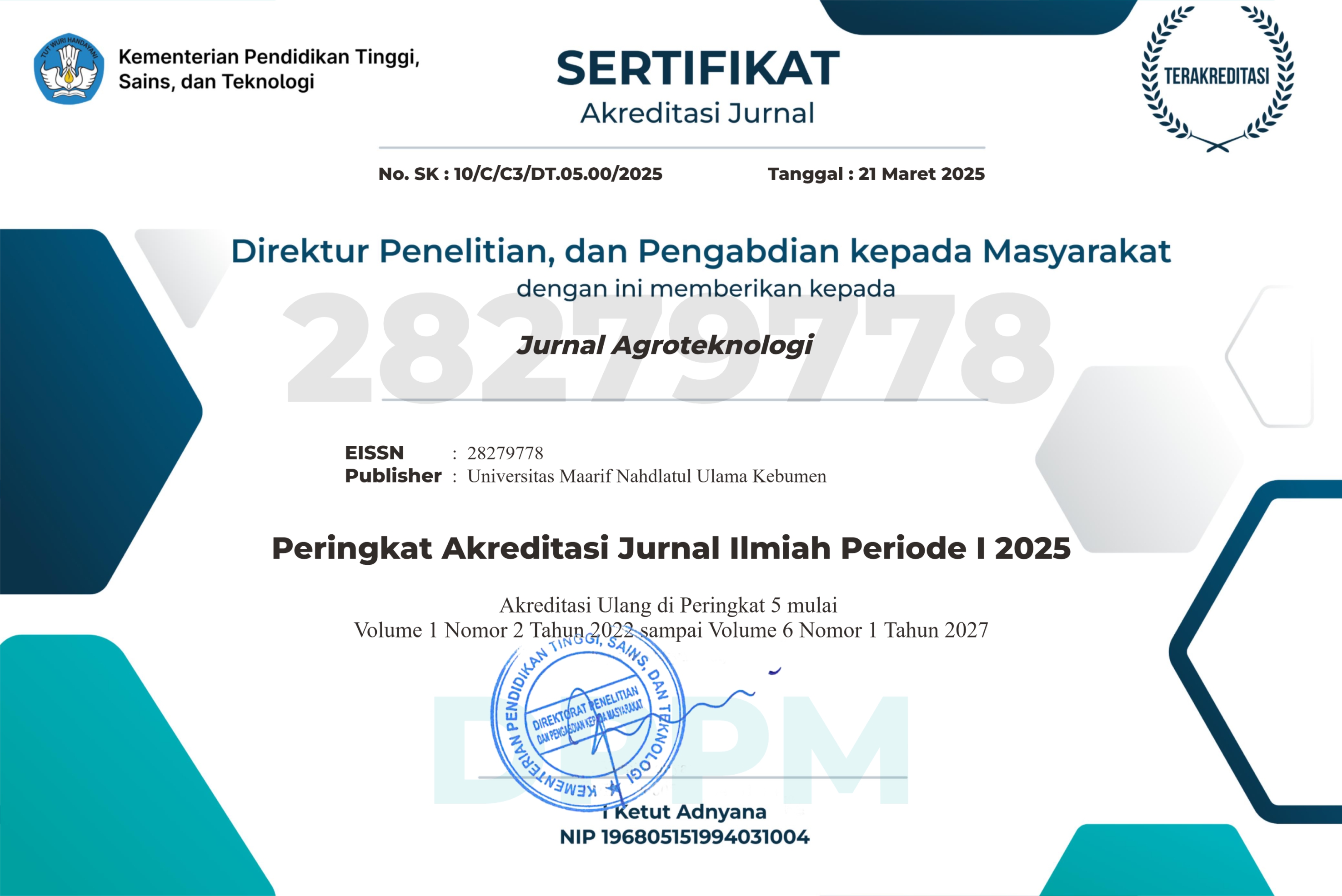Analisis Nilai Tambah Ubi Talas Menjadi Kripik dalam Mendukung Ketahanan Pangan di Kecamatan Riung Kabupaten Ngada
DOI:
https://doi.org/10.53863/agronu.v4i02.1608Keywords:
Analysis, Value added, Taro yam, Chips, Food security, Riung sub-districtAbstract
This study aims to analyze the added value of taro processing into chips as a strategy to strengthen food security in Riung District, Ngada Regency. The method used is a quantitative descriptive approach with added value analysis using the Hayami method. Data were obtained through interviews, observations, and documentation of taro chip business actors and related agencies. The results of the study indicate that taro processing into chips provides significant economic added value with a taro chip added value ratio of 89.31% from the use of 200 kg of raw materials producing 350 Kg. In addition, the development of taro chip businesses can reduce dependence on imported food and become an alternative in supporting food security in the region. Policy support and training are needed for business actors to increase the productivity and competitiveness of taro processed products in local and regional markets. The conclusion with a high added value ratio, the taro processing business into chips in Riung District has proven to be profitable and has the potential to be developed. This business not only increases people's income, but also contributes to supporting food security
References
BKP. (2021). Percepatan Penganekaragaman Konsumsi Pangan (P2KP), Berita BKP, Kementarian Pertanian, (http://bkp.pertanian.go.id/blog/post/percepatan-penganekaragaman-konsumsi-pangan-p2kp ). Diakses 5 Mei 2025.
BKP. (2021). Direktori Perkembangan Konsumsi Pangan. Badan Ketahanan Pangan Kementerian Pertanian. (https://satudata.pertanian.go.id/assets/docs/publikasi/Analisis_Ketahanan_Pangan_Tahun_2021). Diakses 06 Mei 2025
Hayami, Y;. Kawagoe, T;. Morooka, Y. & Siregar, M. (1987). Agricultural Marketing and Processing in Upland Java, A Prespective from Sinda Village. Coarse Grains Pulses Roots and Tuber Center (CGPRTC). Bogor.75 hal.
Herlina, R. (2018). Pengolahan talas menjadi produk pangan olahan. Jakarta: Gramedia Pustaka Utama.
Maulidiah, & Feny. (2011). Pengembangan agribisnis berbasis komoditas lokal. Jakarta: Pustaka Agribisnis.
Ngaku, M.A.,Limbu, U.N., Bao, A.P. (2024). Potential Utilization of Taro Yam as Food in Ngada District. Jurnal International Journal of Life Science and Agriculture Research.2 (12).
Nugroho, W. T., Andini, D. P., dan Angraeni, O. J.(2016). Penerapan Teknologi Dan Manajemen Usaha Untuk Meningkatkan Efektifitas Dan Efisiensi Produksi Serta Keuntungan Pada Ikm Keripik Talas. Seminar Nasional Hasil Penelitian dan Pengabdian Masyarakat ISBN 978-602- 14917-2-0
Purwaningsih, E. (2011). Pengaruh Pemberian Kompos Blotong, Legin, Dan Mikoriza Terhadap Serapan Hara N Dan P Tanaman Kacang Tanah. Widya Warta.
Santoso, B. (2020). Peningkatan nilai tambah umbi-umbian lokal. Bandung: Alfabeta.
Wulandari, E. (2020). "Pengolahan Minyak Goreng untuk Industri Keripik". Jurnal Teknologi Industri, 15(4), 205-210
Zaman, N dkk. (2021). Inovasi Produk Pertanian. Penerbit Yayasan Kita Menulis. Buku elektronik.
Downloads
Published
How to Cite
Issue
Section
License
Copyright (c) 2025 Maria Alfonsa Ngaku, Marten Umbu Kaleka, Daniel Simo

This work is licensed under a Creative Commons Attribution-ShareAlike 4.0 International License.
Authors retain copyright and grant the journal right of first publication with the work simultaneously licensed under a Creative Commons Attribution-ShareAlike 4.0 International License that allows others to share the work with an acknowledgment of the work’s authorship and initial publication in this journal











